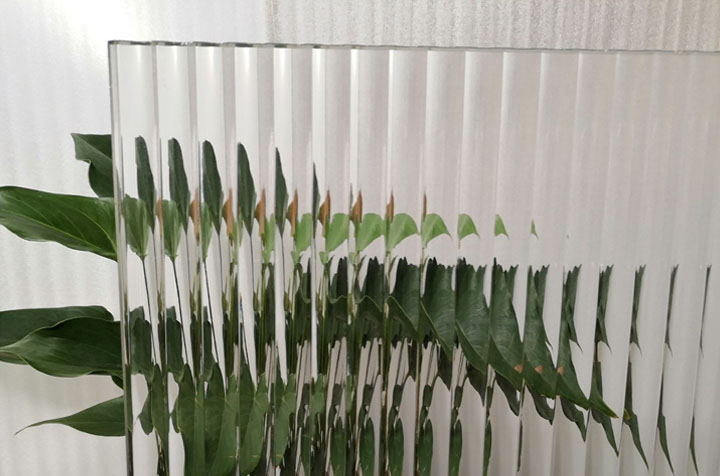Decorative glazing is an intriguing and versatile design element that has been increasingly embraced in architecture and interior design. This technique involves the use of glass that has been creatively altered to enhance the aesthetic appeal of spaces. From stained glass to intricate patterns, decorative glazing offers a myriad of possibilities for both residential and commercial applications.
One of the most notable applications of decorative glazing is in windows and doors. Stained glass, for instance, has a long history, dating back to medieval times when it was used to depict religious scenes in cathedrals. Today, artists and designers continue to create stunning stained glass installations that can serve as focal points in homes or public buildings. These colorful glass pieces not only add beauty but also filter natural light in captivating ways, casting vibrant hues across interiors.
In modern architecture, etched or sandblasted glass has gained popularity. These techniques involve the removal of layers from the glass surface, creating patterns or images that obscures visibility while still allowing light to penetrate. This subtlety can enhance privacy in bathrooms or offices while contributing to the overall design aesthetic. The ability to customize designs allows for a unique touch that reflects the personality of the space.
decorative glazing
Another exciting direction in decorative glazing is the use of digital printing technology. This innovation allows for high-resolution images and patterns to be printed directly onto glass surfaces. As a result, designers can incorporate virtually any image, from nature scenes to abstract art, into their projects. This flexibility opens up endless opportunities for creativity and personalization, enabling spaces to tell a story or evoke a specific mood.
Moreover, decorative glazing fulfills practical functions as well as aesthetic ones. It can improve energy efficiency by allowing natural light to enter while reducing the need for artificial lighting. Additionally, it can contribute to sound insulation in urban environments, creating a more serene indoor atmosphere.
In conclusion, decorative glazing is an art form that marries functionality with beauty. Whether through traditional stained glass, modern etched designs, or cutting-edge digital prints, this technique offers limitless possibilities for transforming spaces. As architects and designers continue to explore new ways to integrate decorative glazing into their work, we can expect to see even more innovative and inspiring designs in the future, further enhancing our built environment.
 Afrikaans
Afrikaans  Albanian
Albanian  Amharic
Amharic  Arabic
Arabic  Armenian
Armenian  Azerbaijani
Azerbaijani  Basque
Basque  Belarusian
Belarusian  Bengali
Bengali  Bosnian
Bosnian  Bulgarian
Bulgarian  Catalan
Catalan  Cebuano
Cebuano  Corsican
Corsican  Croatian
Croatian  Czech
Czech  Danish
Danish  Dutch
Dutch  English
English  Esperanto
Esperanto  Estonian
Estonian  Finnish
Finnish  French
French  Frisian
Frisian  Galician
Galician  Georgian
Georgian  German
German  Greek
Greek  Gujarati
Gujarati  Haitian Creole
Haitian Creole  hausa
hausa  hawaiian
hawaiian  Hebrew
Hebrew  Hindi
Hindi  Miao
Miao  Hungarian
Hungarian  Icelandic
Icelandic  igbo
igbo  Indonesian
Indonesian  irish
irish  Italian
Italian  Japanese
Japanese  Javanese
Javanese  Kannada
Kannada  kazakh
kazakh  Khmer
Khmer  Rwandese
Rwandese  Korean
Korean  Kurdish
Kurdish  Kyrgyz
Kyrgyz  Lao
Lao  Latin
Latin  Latvian
Latvian  Lithuanian
Lithuanian  Luxembourgish
Luxembourgish  Macedonian
Macedonian  Malgashi
Malgashi  Malay
Malay  Malayalam
Malayalam  Maltese
Maltese  Maori
Maori  Marathi
Marathi  Mongolian
Mongolian  Myanmar
Myanmar  Nepali
Nepali  Norwegian
Norwegian  Norwegian
Norwegian  Occitan
Occitan  Pashto
Pashto  Persian
Persian  Polish
Polish  Portuguese
Portuguese  Punjabi
Punjabi  Romanian
Romanian  Russian
Russian  Samoan
Samoan  Scottish Gaelic
Scottish Gaelic  Serbian
Serbian  Sesotho
Sesotho  Shona
Shona  Sindhi
Sindhi  Sinhala
Sinhala  Slovak
Slovak  Slovenian
Slovenian  Somali
Somali  Spanish
Spanish  Sundanese
Sundanese  Swahili
Swahili  Swedish
Swedish  Tagalog
Tagalog  Tajik
Tajik  Tamil
Tamil  Tatar
Tatar  Telugu
Telugu  Thai
Thai  Turkish
Turkish  Turkmen
Turkmen  Ukrainian
Ukrainian  Urdu
Urdu  Uighur
Uighur  Uzbek
Uzbek  Vietnamese
Vietnamese  Welsh
Welsh  Bantu
Bantu  Yiddish
Yiddish  Yoruba
Yoruba  Zulu
Zulu 

